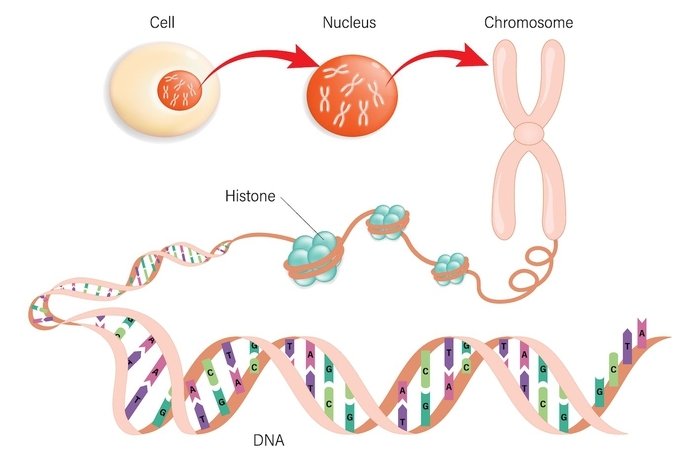Many people think that humanity discovered all the secrets of human genes in 2003 when scientists announced the complete decoding of the human genome.
But even `trash` has potential `treasures`.
Recently, a landmark study finally solved the mystery of the genome, analyzing the complete sequences of previously unsequenced DNA.
Now, scientists are discovering that some gene sequences encoding proteins do not have any obvious ancestors, and geneticists call them orphan genes.
Some of these orphan genes arose naturally as we evolved, unlike other genes we inherit from our ancestors, researchers speculate.
In a paper published Tuesday in the journal Cell Reports, researchers in Ireland and Greece found about 155 smaller versions of the DNA sequence (ORF), which create microproteins capable of
`I think this is the first study to look at the specific evolutionary origin of these small DNAs and their microproteins,` said Nikolaos Vakirlis, a scientist at the Biomedical Sciences Research Center in Greece and a
Most of us are familiar with DNA consisting of four chemical building blocks called nucleotides: adenosine (A), thymine (T), cytosine (C), and guanine (G).
When a ribosome is reading a series of nucleotides, a string of three called a codon also tells where to start and stop reading, like the first and last pages of a book.
Aoife McLysaght, Professor of Genetics at Trinity College Dublin in Ireland and lead author of the paper, told Inverse that the space in between the start codon and stop codon is called the ORF.
`It’s a piece of DNA that has the potential to encode a protein of a certain length. However, we don’t know whether it’s a gene or not so more research is still needed,` she explains.
The general rule that scientists agree on is that the longer the ORF, the greater the chance that it encodes a protein that will be functional.
`As the ORF is relatively short in length, we basically cannot know what it encodes for, whether it is biologically significant or just occurs by chance, which still requires further research.
If these small ORFs are important and produce influential proteins, could they explain how new genes evolve and new traits emerge in a species?
There are countless small ORFs in the genome, so screening to see which ones are and are not active is essential.
Now, scientists have analyzed a data set of small human ORFs that have been identified as having biological functions and assembled them into a phylogenetic tree, a diagram showing the relationships between human species.
This is done by comparing the sequence of the small ORF with similar sequences in species closely related to humans such as chimpanzees, orangutans, gorillas…
`If you could only find an ORF in humans, then it would seem to be human-specific,` McLysaght said. `But if it’s something found in other primates, then it could come from a common ancestor.`

Scientists have discovered that there are about 155 small ORFs that create microproteins that arise entirely from scratch — something called de novo gene birth — in unique regions in the DNA.
More than a quarter of these short genetic sequences (namely 44) appear to occur only in humans and cause growth defects in immortalized cell lines (these are cells that normally do not
Three other ORFs appear to be involved in diseases such as muscular dystrophy, retinitis pigmentosa, and a rare genetic condition affecting development called Alazami syndrome that is linked to a gene called LARP7.
Another ORF appears to be closely related to heart tissue and is an ORF that humans share with chimpanzees.
McLysaght and Vakirilis say this is just the beginning to understand how ORFs are involved in the creation of new genes, human evolution, and their role in health and disease.
`There is still a lot of work to be done and a lot of ORFs to study. For example, not every new gene has a biological benefit. Many can be detrimental and harmful to an organism,` Vakirlis said.
